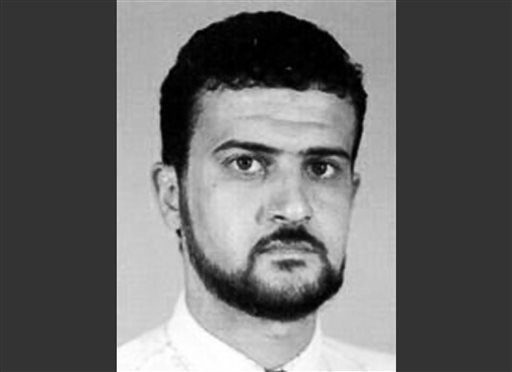(AP) Did Obama swap ‘black’ detention sites for ships?
By EILEEN SULLIVAN
Associated Press
WASHINGTON
Instead of sending suspected terrorists to Guantanamo Bay or secret CIA “black” sites for interrogation, the Obama administration is questioning terrorists for as long as it takes aboard U.S. naval vessels.
And it’s doing it in a way that preserves the government’s ability to ultimately prosecute the suspects in civilian courts.
That’s the pattern emerging with the recent capture of Abu Anas al-Libi, one of the FBI’s most wanted terrorists, long-sought for his alleged role in the 1998 bombings of U.S. embassies in Africa. He was captured in a raid Saturday and is being held aboard the USS San Antonio, an amphibious warship mainly used to transport troops.
Questioning suspected terrorists aboard U.S. warships in international waters is President Barack Obama’s answer to the Bush administration detention policies that candidate Obama promised to end. The strategy also makes good on Obama’s pledge to prosecute terrorists in U.S. civilian courts, which many Republicans have argued against. But it also raises questions about using “law of war” powers to circumvent the safeguards of the U.S. criminal justice system.
By holding people in secret prisons, known as black sites, the CIA was able to question them over long periods, using the harshest interrogation tactics, without giving them access to lawyers. Obama came to office without a ready replacement for those secret prisons. The concern was that if a terrorist was sent directly to court, the government might never know what intelligence he had. With the black sites closed and Obama refusing to send more people to the U.S. detention facility at Guantanamo Bay, Cuba, it wasn’t obvious where the U.S. would hold people for interrogation.
And that’s where the warships came in.
On Saturday, the Army’s Delta Force and Libyan operatives captured al-Libi in a raid. A team of U.S. investigators from the military, intelligence agencies and the Justice Department has been sent to question him on board the San Antonio, two law enforcement officials told The Associated Press. The San Antonio was in the Mediterranean as part of the fleet preparing for now-canceled strikes on Syria last month.
Al-Libi, who was indicted in 2000 for his involvement in the 1998 bombings of U.S. embassies in Africa, was being held on the warship in military custody under the laws of war, which means a person can be captured and held indefinitely as an enemy combatant, one of the officials said. Both spoke on condition of anonymity to discuss the ongoing investigation.
As of Monday, al-Libi had not been read his Miranda rights, which include the rights to remain silent and speak with an attorney. And it was unclear when al-Libi would be brought to the U.S. to face charges.
The Obama administration publicly debuted the naval ship interrogation tactic in 2011 when it captured Ahmed Abdulkadir Warsame, a Somali citizen who the U.S. government said helped support and train al-Qaida-linked militants. Warsame was questioned aboard a U.S. warship for two months before he went to New York to face terrorism charges. He pleaded guilty earlier this year and agreed to tell the FBI what he knew about terror threats and, if necessary, testify for the government.
The White House would not discuss its plans for prosecuting al-Libi.
The interrogators sent to question al-Libi are part the same group that questioned Warsame _ the High-Value Detainee Interrogation Group. The Obama administration created the group of interrogators in 2009 to juggle the need to extract intelligence from captured suspected terrorists and preserve evidence for a criminal trial.
Under interrogation, Warsame gave up what officials called important intelligence about al-Qaida in Yemen and its relationship with al-Shabab militants in Somalia. Because those sessions were conducted before Warsame was read his Miranda rights, the intelligence could be used to underpin military strikes or CIA actions but were not admissible in court. After that interrogation was complete, the FBI stepped in and started the questioning over in a way that could be used in court.
After the FBI read Warsame his rights, he opted to keep talking for days, helping the government build its case.
Al-Libi’s case is different from Warsame’s in that he already has been indicted for allegedly conducting “visual and photographic surveillance” of the U.S. Embassy in Nairobi that was attacked in 1998. Warsame was indicted after he was questioned aboard the naval ship.
The ACLU’s Shamsi said it’s a good thing that al-Libi was not being held secretly, as was the policy during the Bush administration. But, she said, al-Libi should be entitled to counsel and a speedy trial.
While prisoners have a right to a speedy trial, there’s no reason the U.S. needs to rush al-Libi to court. That’s because in 2010 U.S. District Judge Lewis Kaplan ruled that the government could prosecute al-Qaeda suspect Ahmed Ghailani in New York, despite holding him for five years in CIA and military custody. Kaplan said the delay didn’t violate Ghailani’s speedy-trial rights because the government has the authority to detain suspects during wartime. Kaplan is also the judge in al-Libi’s case.
The Obama administration has said it can hold high-value detainees on a ship for as long as it needs to. During his confirmation hearing in June 2011 to be the head of U.S. Special Operations Command, Adm. William McRaven said the U.S. could keep a detainee on a ship for as long as it takes to determine whether the U.S. could prosecute the suspect in civilian court or whether the U.S. could return the suspect to another country.
____
Associated Press writers Matt Apuzzo, Nedra Pickler, Pete Yost and Adam Goldman contributed to this report.
____
Follow Eileen Sullivan on Twitter at http://twitter.com/esullivanap

COMMENTS
Please let us know if you're having issues with commenting.